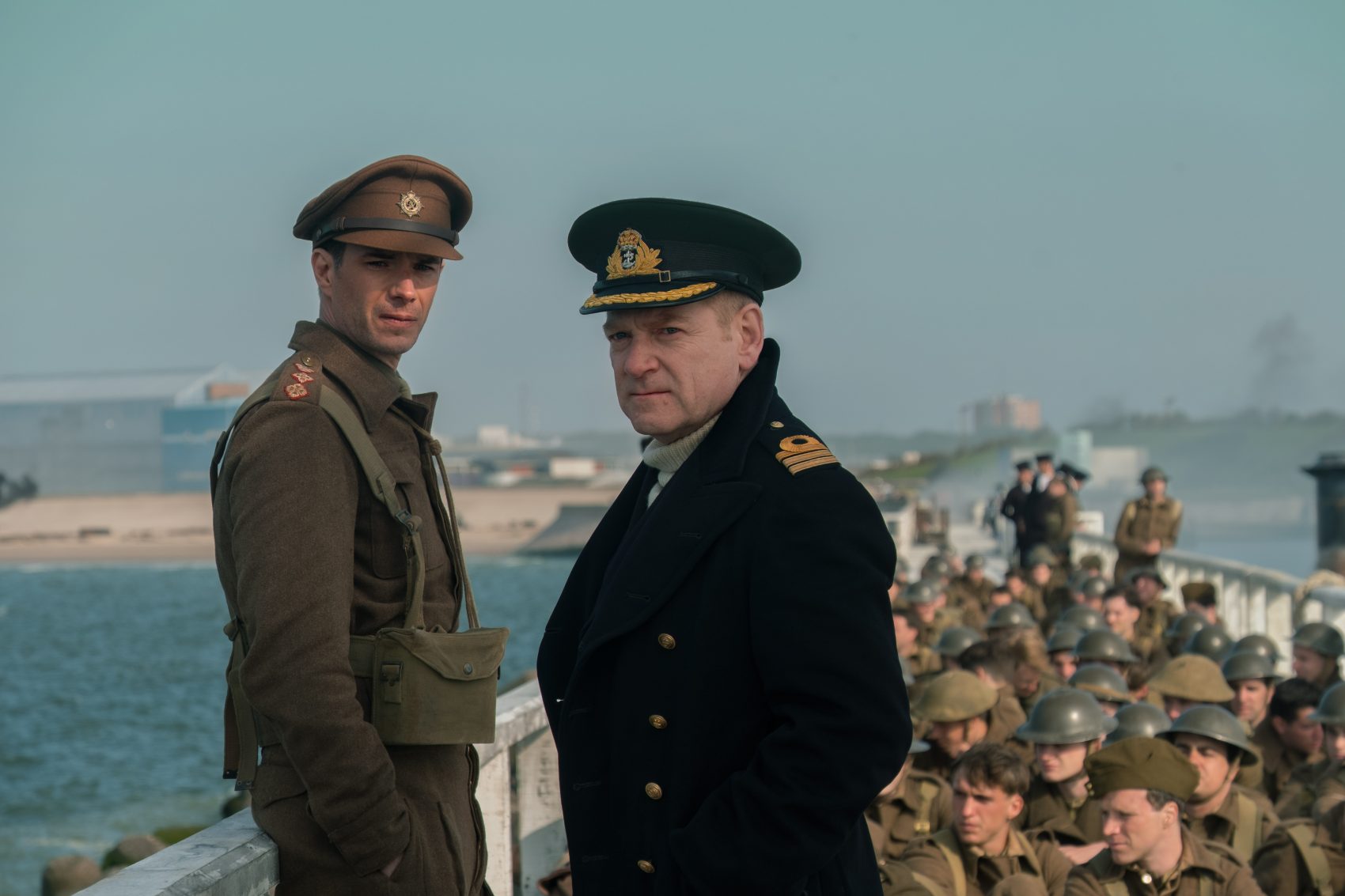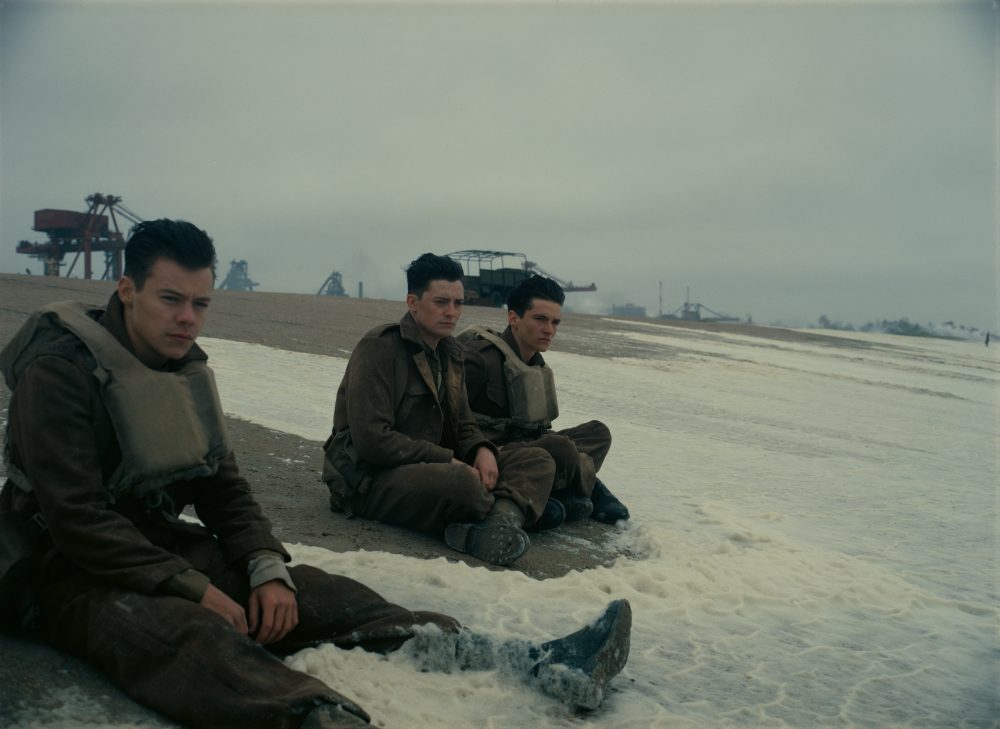Advertisement
Review
‘Dunkirk’ Is Christopher Nolan’s Most Impressive Film, With WWII Battles Fought On Land, Sea And Air

Listen closely and you’ll hear the sound of a ticking clock embedded into Hans Zimmer’s score for the new Christopher Nolan film, “Dunkirk.”
It’s a fitting flourish, as this particular filmmaker has been artfully mucking about with time signatures since his 2000 breakthrough hit “Memento,” which ran in reverse chronological order to put the audience in the headspace of its amnesiac anti-hero. And with Nolan's otherwise woeful "Interstellar" and just about all of his "Inception," the best sequences occur when time is moved at drastically different speeds, cross-cut between worlds, the director conducts the temporal displacement for woozy formalist thrills.
“Dunkirk” is Nolan’s leanest and most impressive film, boasting his most audacious structural gambit to date. The film intercuts three separate stories that take place over a week, a day and an hour — on land, sea and air, respectively — so that we’re watching them all simultaneously, giving the sensation of a constant battle. Relentlessly barreling between dive bombings, torpedo attacks and dogfights, the movie works your nerves. It’s just one damn thing after another.

Chronicling the 1940 mass evacuation of Allied forces from France, the film finds 400,000 soldiers stranded on a beach with precious little in the way of resources for their rescue. Nolan has always been a nut for logistics (his Batman movies are so wonky even Catwoman’s ears have a practical application), and the complications of this arduous military operation are a fine match for his gearhead exhibitionism. Kenneth Branagh is on hand as an admiral who keeps a stiff upper lip while telling us just how bad things are about to get, but otherwise the director avoids his usual penchant for over-explaining everything in favor of fully immersive, almost silent cinema.
The gaunt, haunted Fionn Whitehead stars as a rattled young soldier we first see fleeing to the beach, and then we stick close by his side as he does everything he can to try and claw his way out in one piece. He’s soon joined in the struggle by actor Aneurin Barnard and singer Harry Styles, but we don’t learn the names of these men, nor do we hear about their backgrounds and the gals they have at home. They’re all simply faces, wide-eyed and traumatized in a gigantic mass of bodies stranded out in the open with no cover as the bullets and bombs fall like rain.
Even most anti-war movies have an element of hard-charging heroism, so it’s difficult to recall one that stews so unnervingly in helplessness the way “Dunkirk” does. Shooting on large format film, Nolan foregrounds the massiveness of the rescue effort and emphasizes the smallness of these individual soldiers, to a point where sometimes the beach looks like an ant farm. There’s not a lot of dialogue in the movie, and what little there is often gets drowned out by the sound effects or Zimmer’s music.
Advertisement

The picture’s seafaring sequences are more conventionally entertaining, with a cardigan-wearing Mark Rylance embodying the spirit of English resilience, or something like that. He’s playing one of the hundreds of civilians who brought their pleasure boats across the choppy channel to pitch in and help bring the boys back home. Rylance is the kind of actor who can work wonders with very little, imbuing what could have been a stock character with a streak of sadness and an upright decency that feels hard-won. He’s terrific.
And speaking of doing a lot with a little, Tom Hardy circles overhead as a British Spitfire pilot. The frequently inaudible actor who played Bane in Nolan’s “The Dark Knight Rises” is once again muffled under a mask, coasting on his considerable screen presence in some anxiety-inducing aerial combat sequences. There’s a scene with his wingman (Jack Lowden) and a flooding compartment that almost gave me a heart attack. This is not a fun movie for people who have a fear of drowning.
As the clocks in Zimmer’s score tick away, Nolan ultimately threads all three separate story strands together for a hair-raising finale that’s not so much a triumph as it is just a relief. American WWII movies are so often about winning — Michael Bay and Ben Affleck even tried turning “Pearl Harbor” into a victory — “Dunkirk” feels more quintessentially British in that it’s a movie about getting back up again after taking a serious shellacking. The final shots are defiant and thrilling.
Where To Watch
“Dunkirk” was shot on 65mm film partially with IMAX cameras, and at the filmmaker’s request, it is being released to cinemas in multiple formats. Most theaters will be screening it via regular 2K or 4K DCPs (digital cinema packages with a horizontal resolution of approximately 2,000 or 4,000 pixels) resulting in a severe downgrading of image quality.
The closest theater capable of screening Nolan’s preferred format of IMAX 70 mm is in Providence, Rhode Island. IMAX theaters in Massachusetts are currently all digital, with the Jordan’s Furniture in Reading boasting the only 4K laser projector in the Northeast. The rest offer something called “IMAX Xenon,” nicknamed “Liemax” by exhibition aficionados, it’s 2K projection on a larger screen than usual for an inflated ticket price.
Luckily for us, the Somerville and Coolidge Corner Theatres are two of only 125 venues in the country showing “Dunkirk” on old-school 70mm film, the nearly vanished format recently revived by Quentin Tarantino for “The Hateful Eight.” With a resolution estimated to be the equivalent of 12K to 13K pixels, it’s a glorious way to watch a movie. I saw “Dunkirk” at the Somerville earlier this week and the crispness and clarity of the image were wonders to behold. Choose wisely.

